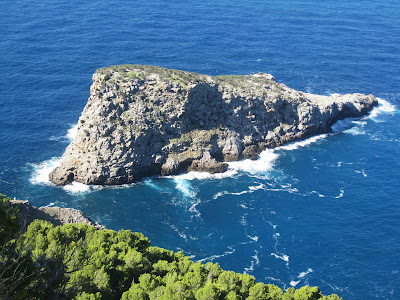It was exactly a year ago that I started a blog mainly to provide my son some pictures of Scotland as he circumnavigated the world. My intention was to do about 4 blogs a month and it was restricted to the extended family. I have since deleted some of the early blogs but I was pleased to see that I had managed 60 blogs in a year. In April I opened the Blog to anyone partly because I was writing about wider issues or about activities involving others and I wanted to share the content with them.
The content has changed, originally it was about my activities in post retirement mode but then I started blogging about politics as the election approached and then some profiles of friends and ancestors. In June I spent a couple of weeks trekking the GR20 and because I had kept timings and taken pictures I provided a log of the walk. I also started to record my hillwalking trips which until now I had recorded as word documents that lay dormant.
In June an update of the Blogging software provided an analytic tool which allowed me to see which blogs were being visited. The number of hits per month has increased from 265 in June to 635 in September and there have been over 2000 hits since the analytics have been available. 79% of the audience are in the UK with 7% in the USA, 3% in Canada, 2% in France, Italy and the Netherlands and double figures of hits from Russia, China, Slovenia, and Denmark.
By far the most visited has been the GR20 blog which usually reaches a double figure of hits everyday and scores 36% of all visits . Eva's wedding comes next and then, somewhat surprisingly, the one on my Grandad. The blogs of hill walks usually achieve more than 30 hits. Politics are less popular although the ones on News International, Waltzer Economy and Strange Days have been well read. Travel logs and everyday outings, GR20 excepted, are the least visited but many of these were early blogs and were not openly available when first published.
So what next, well I will probably continue. I was told by an old acquaintance whom I bumped into earlier this week that they had started with the most recent and had systematically worked backwards and had really enjoyed the politics. Conversely another political friend said her favourite was Little People.
I have also registered a website which I intend to use to download my hillwalking files, partly as a response to the large number of hits on the few I have put on the blog. I have over 450 logs of all my munro outings over twenty years with spreadsheets that tell the timings, length of walk, ascent and the routes which may sound dry but are very useful to like minded anoraks. Some of these are on an old applemac and others on various memory sticks. If I can find them and download them, match them with the thousands of old photos that I am slowly scanning in I will be able to provide at least 4 illustrated trips up every munro in Scotland. The problem at the moment is that I am back to working 50 hours a week so I may lack the time to do these things but its the end of summer time tonight so who knows.































